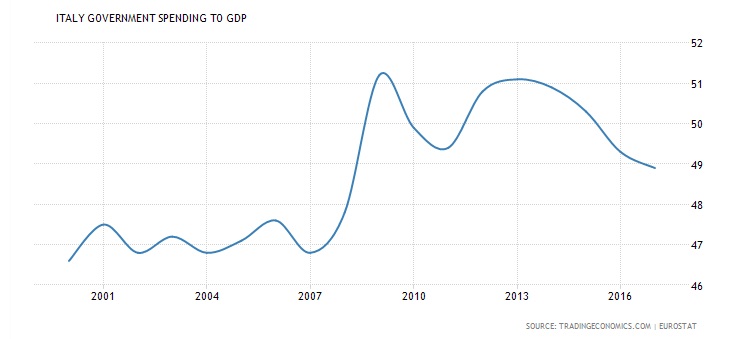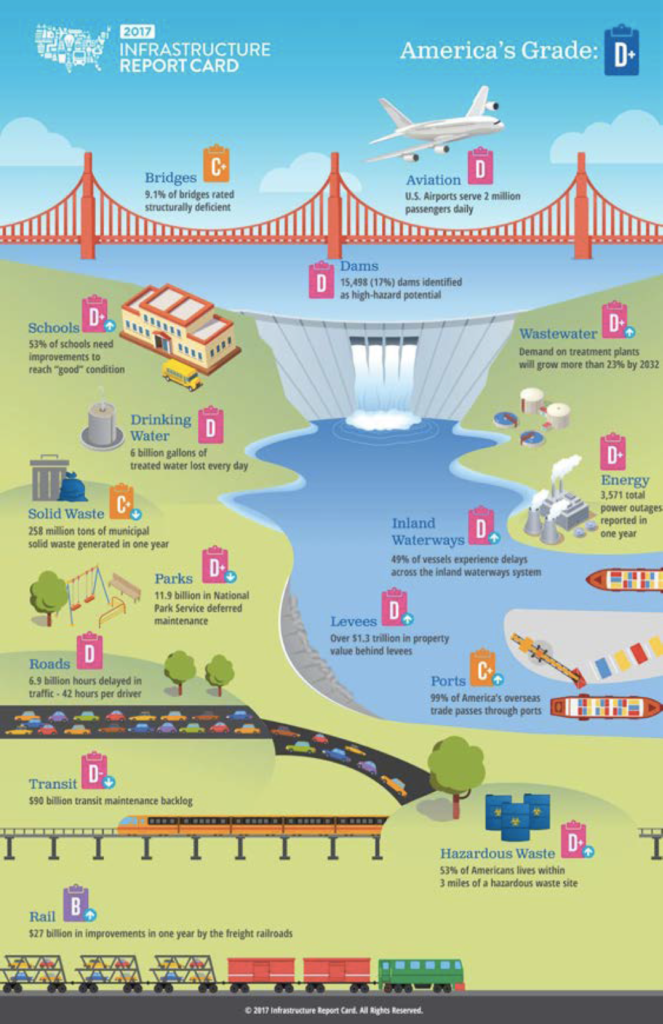Successful investing requires distancing oneself from emotion and from political biases, letting the data do the talking while attempting to be as objective as possible in assessing the potential risks versus rewards. This week I am failing miserably at this.This week my second home since 2012, Genoa, Italy, made headlines around the world for the worst of all possible reasons. At least 39 people died because a bridge I have traveled across countless times crumbled. Many of those who were on the bridge fell 150 feet to their death and those below the bridge when it collapsed, I cannot even imagine what they experienced. When I think of what it will be like to see that pile of rubble when I return, I alternate between wanting to throw up and scream at the top of my lungs at those who I hold responsible. This should never have happened. The loss of life was thankfully less than it could have been given that a good portion of the city’s residents had already fled the heat during the August holiday period.Today politicians in Italy are doing what politicians all over the world do after a tragedy, engaging in a public covering of their own backsides while angrily pronouncing that those at fault will be discovered and held accountable. The same old song as it were.Here is the situation as I know it, which I am sharing as it helps to understand the challenges with infrastructure investment, something that the U.S. is failing at as well.The Morandi bridge was completed in 1967 and along with much of the surrounding toll roads, (the route from the A10 onto the A26 and the first part of the A7) is operated by Autostrade per l’Italia which is 88% owned by Atlantia (ATASF:OTC), a company that also manages highways in India, Brazil, and Chile, airports in France and Italy, and jointly controls a Spanish toll-road operator. Atlantia is in turn effectively controlled by the Benetton family, the largest shareholder at over 30% of the outstanding shares through the SPV (Special Purpose Vehicle) Sintonia. An oddity of the Italian markets is that often you will have a publicly traded company’s traded shares represent only a non-controlling stake in the company, with the control remaining in the hands of one or more of the wealthier families. While the shares are publicly traded, investors have no real say in the public entity’s governance.It turns out that the bridge’s designer, Riccardo Morandi may have been a brilliant architect, but not so great of a civil engineer. This bridge has had problems from the beginning and has required much more maintenance expenditures than is typical. This is where things get ugly. For years and years many qualified engineers have been warning of the bridge’s imminent collapse. It’s operator, Autostrade per l’Italia, has proposed alternatives to reduce stress, meaning traffic, on what was known to be a faulty bridge. All efforts were to no avail.Enter the awkward coalition between the 5-Star Movement, (Movimento 5 Stelle) and Lega. Two political parties that joined forces to gain a controlling majority in Italy, but whose positions often are at extreme odds. Forza Italia, the Democrats and most importantly Lega have all been in favor of La Gronda. La Gronda is Genovese (Genoa’s regional dialect) for eves, such as you would have on a house. La Gronda was a project that was to connect the port at Voltri directly to the A26. Voltri is the container terminal where those big metal containers you see go to/from ships to/from (mostly) trucks and then get onto the A7. The 5-Star Movement has been vehemently opposed to La Gronda, calling it “La favoletta,” the big fairy tale, with a formal “No Gronda” campaign in 2013. La Gronda was one of the biggest conflicts between the two parties.Related: Can the Market Continue Its Run Through the End of 2018? Previously policy statements concerning Genoa (Genova in Italian) and La Gronda were on the 5-Star Movement’s website. That was changed quickly immediately following the bridge’s collapse, but thanks to the beauty of the internet being forever, archived versions of those pages can be found. One such copy can be viewed here . There is a lovely video of Beppe Grillo, (the founder of the 5-Star Movement) railing against La Gonda in 2009 on YouTube. The start of this video has a charming little Italian girl carrying one of the “No Gronda” flags. Pretty sure her parents aren’t feeling so great these days. If you enjoy reading from irate Italians, I also recommend searching for #NoGronda on Twitter. Very few nations can do rage quite like Italy. So far Lega is wisely keeping quiet as 5-Star hangs themselves scrambles, yelling and screaming about how they were never really against La Gronda. I’m telling you, this stuff would make Pinocchio squirm.This week Atlantia (the owner of the operating company for the bridge) is handling the situation so poorly that I’m nearly speechless – not an easy task as anyone who knows me can attest. The press releases on the company’s website as of August 16 th ought to be an utter embarrassment to the management team and the Benetton family and a business school case study in precisely what not to do when tragedy strikes. Alitalia shares fell 22% in Milan on Thursday, their worst-ever decline. The company has lost around $6.2 billion in market cap since the bridge collapsed. This is likely only going to make the recovery process longer and more painful.Italy, a nation with the eighth largest economy in the world , has had public spending account for around half of the nation’s GDP over the past decade yet its infrastructure spending has been well below that of its neighbors. Take a look at a topographical map of Italy and one of France, then look at the infrastructure spending of the two. Argh! Italy is pretty much all mountains and valleys so roads are all about bridges and tunnels. France is a pancake in comparison yet they spend more on all those flat roads! Taking into account the percent of GDP that the government spends, clearly this isn’t an issue of a government not having enough funds, the question has been where is it spending? 
 You will find more infographics at Statista The challenge is that infrastructure is basically the IT department of government. Rarely does anyone from the C suite walk down to the IT department of a company to say, “Good job, no hackers were successful today and all our tech ran smoothly.” Politicians get reelected by making people happy. Maintenance of existing bridges and roads doesn’t make for great photo ops and is often met with resistance by the electorate – NoGronda!Think this kind of thing can’t happen in the USA? Think again. In August 2007, the I-35W Mississippi River Bridge in Minneapolis collasped, killing 13 and injuring 45. A decade later, things haven’t improved.
You will find more infographics at Statista The challenge is that infrastructure is basically the IT department of government. Rarely does anyone from the C suite walk down to the IT department of a company to say, “Good job, no hackers were successful today and all our tech ran smoothly.” Politicians get reelected by making people happy. Maintenance of existing bridges and roads doesn’t make for great photo ops and is often met with resistance by the electorate – NoGronda!Think this kind of thing can’t happen in the USA? Think again. In August 2007, the I-35W Mississippi River Bridge in Minneapolis collasped, killing 13 and injuring 45. A decade later, things haven’t improved.  You will find more infographics at Statista What happened in Italy, yes it did happen here and could happen again.
You will find more infographics at Statista What happened in Italy, yes it did happen here and could happen again.  You will find more infographics at Statista It isn’t just our bridges that are endangering the nation. Our airports, dams, schools, sewer treatment facilities, energy grid, waterways, levees, ports, parks, roads, drinking water, and hazardous waste facilities are all in need of investment with the nation’s infrastructure getting a D+ in 2017 from the American Society of Civil Engineers .
You will find more infographics at Statista It isn’t just our bridges that are endangering the nation. Our airports, dams, schools, sewer treatment facilities, energy grid, waterways, levees, ports, parks, roads, drinking water, and hazardous waste facilities are all in need of investment with the nation’s infrastructure getting a D+ in 2017 from the American Society of Civil Engineers .  Hopefully, the current administration and/or those in Congress will use this tragedy to focus on America’s infrastructure needs. We’ve heard a lot of talk out of the current Administration about just this, and I hope this serves as a catalyst for the country. A weak infrastructure is a significant headwind to the economy while a modern and robust one becomes a tailwind. This is an area of great opportunity for those in D.C. to do what is necessary, for investors when we see this issue get the attention it deserves, which is the basis for our Rebuilding America index , and for Americans who would reap benefits across many aspects of our lives including less time wasted commuting to and from work or in air travel, less wear and tear on our cars, and lower prices for the things we buy thanks to reduced transportation costs.Personally, it would be really nice to be able to drive around my other home base in San Diego, California without regularly blowing tires and soaking my car seats with coffee thanks to the ubiquitous craterlike potholes.
Hopefully, the current administration and/or those in Congress will use this tragedy to focus on America’s infrastructure needs. We’ve heard a lot of talk out of the current Administration about just this, and I hope this serves as a catalyst for the country. A weak infrastructure is a significant headwind to the economy while a modern and robust one becomes a tailwind. This is an area of great opportunity for those in D.C. to do what is necessary, for investors when we see this issue get the attention it deserves, which is the basis for our Rebuilding America index , and for Americans who would reap benefits across many aspects of our lives including less time wasted commuting to and from work or in air travel, less wear and tear on our cars, and lower prices for the things we buy thanks to reduced transportation costs.Personally, it would be really nice to be able to drive around my other home base in San Diego, California without regularly blowing tires and soaking my car seats with coffee thanks to the ubiquitous craterlike potholes.
